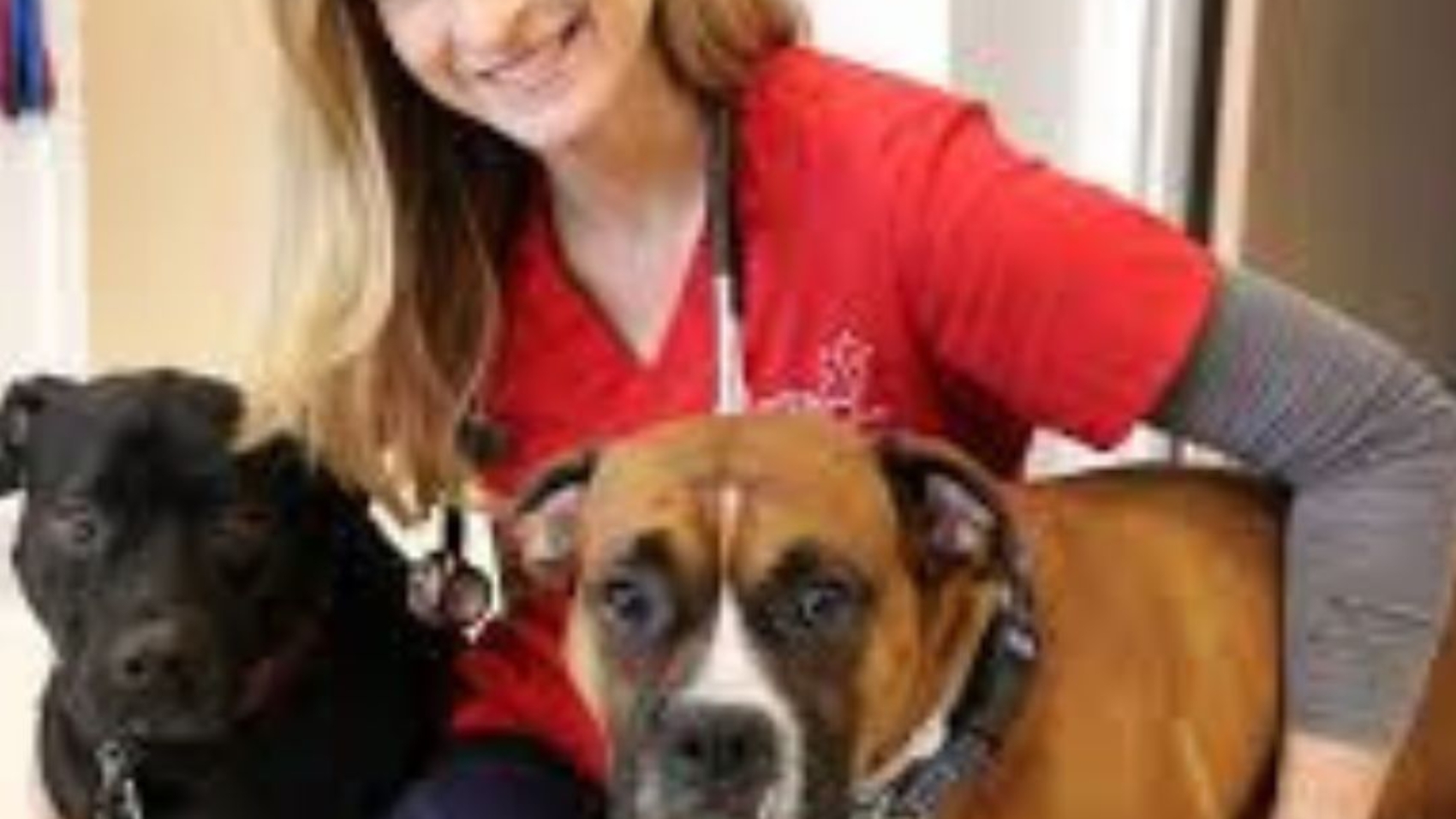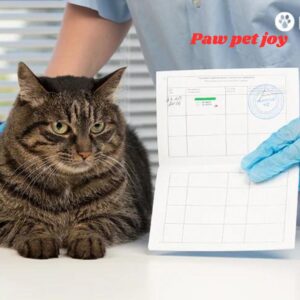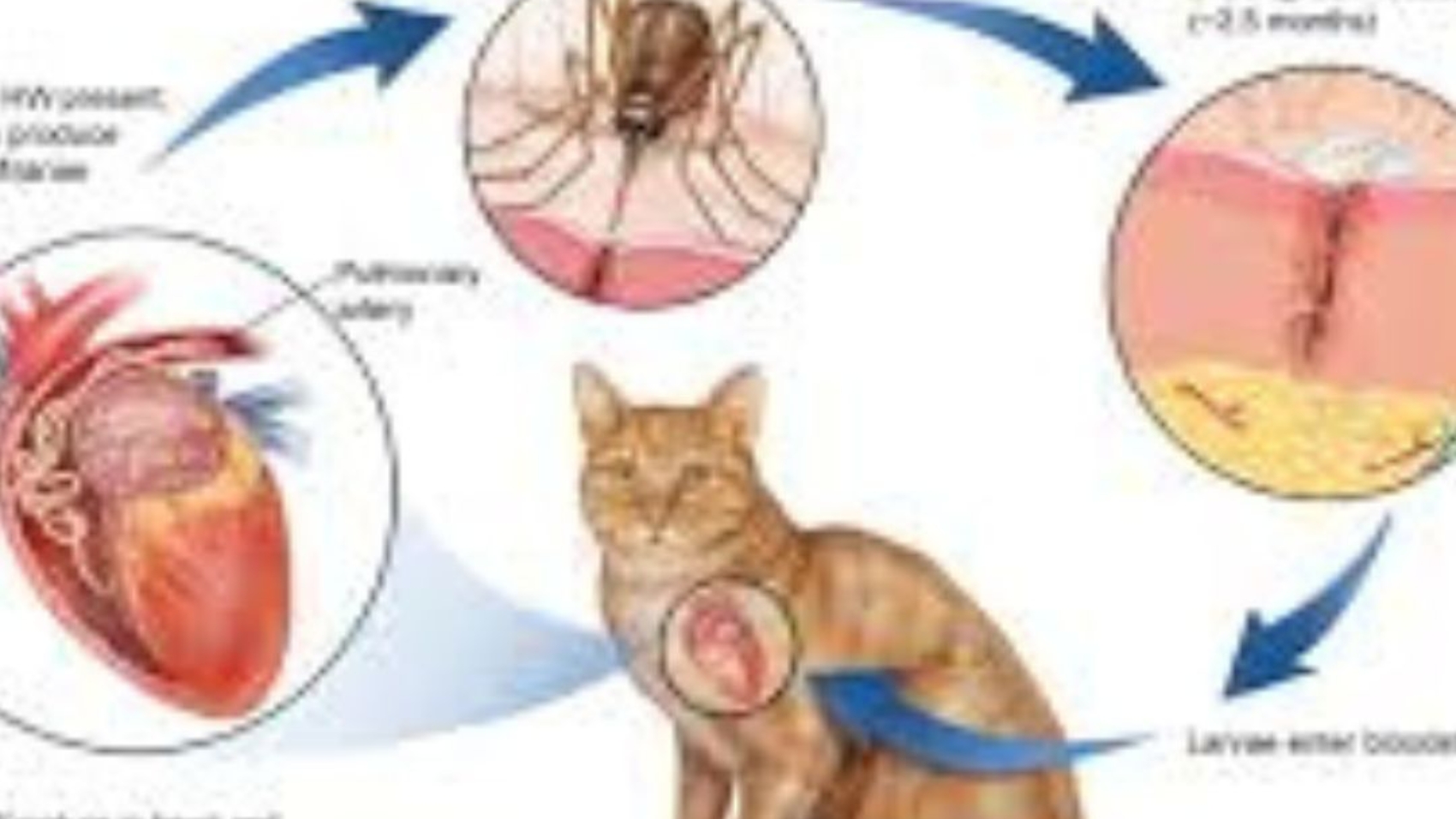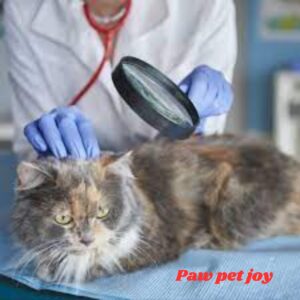Urgent Care Pet Clinic has a unique ability to provide animal medical care. If you’re pet is sick and needs help, visit our website to learn more.
Urgent Care pet clinic in equipped with point-of-care ultrasound, an in-house lab, and digital radiography (x-rays). This medical team is available to treat pet dogs and cats suffering from a variety of non-life threatening conditions such as ear issues, limping, scooting, hot spots, tooth, and nail-related injuries, coughing and sneezing, allergic reactions, minor injuries, and injuries in need of stitches, vomiting, diarrhea and not eating.
If your pet is suffering from any of these conditions, we encourage you to seek medical care as soon as possible. We urge you to seek medical care; alternative options include your family veterinarian or a nearby 24-hour emergency hospital.

With the convenience of 24/7 availability, urgent care pet clinics can be a lifesaver for pet owners dealing with emergencies outside of regular veterinary hours. These clinics are staffed by trained and experienced veterinarians who are equipped to handle a variety of situations, ensuring that your pet receives the prompt and quality care they deserve. Additionally, urgent care pet clinics often have on-site diagnostic equipment and pharmacy services, allowing for quick and efficient treatment plans. So, whether it’s late at night, early in the morning, or on a holiday weekend, you can rest assured knowing that there is a place to turn to for urgent veterinary care when you need it most.
- Understanding Urgent Care Pet Clinics
- Benefits of Urgent Care Pet Clinics
- Services Offered by Urgent Care Pet Clinics
- Choosing the Right Urgent Care Pet Clinic
- The Future of Urgent Care Pet Clinics
Understanding Urgent Care Pet Clinics
Urgent care pet clinics are veterinary facilities that provide prompt medical attention to pets without the need for a prior appointment. Unlike traditional veterinary clinics, which might have long waiting times, urgent care pet clinics cater to pets that require immediate, but not emergency, medical care. This model is akin to urgent care centers for humans, which address medical issues that are urgent but not severe enough to warrant an emergency room visit. Urgent care pet clinics are specifically designed to provide veterinary care when you need it most, 24/7. These clinics are equipped to handle a wide range of issues, from minor injuries to more serious conditions. Whether your pet is experiencing vomiting, diarrhea, difficulty breathing, or any other concerning symptoms, an urgent care pet clinic can provide the necessary care and treatment.
One of the key benefits of urgent care pet clinics is that they offer extended hours and are typically open on weekends and holidays. This ensures that pet owners can seek medical attention for their pets at any time, even outside of regular business hours. This can be a huge relief for pet owners who encounter emergency situations outside of normal veterinary office hours.
In addition to extended hours, urgent care pet clinics often have on-site diagnostic equipment, such as X-ray machines and ultrasound machines, which can help veterinarians quickly assess and diagnose your pet’s condition. This means that treatment can begin promptly, leading to better outcomes for your pet.
Another advantage of urgent care pet clinics is that they are staffed by trained veterinary professionals who are experienced in handling emergency situations. These professionals can provide immediate care and stabilize your pet while also guiding you through the treatment process.
Urgent care pet clinics also tend to have a more streamlined process for seeing patients, which can reduce wait times and ensure that your pet receives prompt attention. This can be especially important in emergency situations when time is of the essence.
While urgent care pet clinics are equipped to handle a wide range of issues, it’s important to note that they are not a substitute for your regular veterinarian. It’s still crucial to schedule routine check-ups and vaccinations with your primary care veterinarian to ensure your pet’s long-term health and well-being.
Urgent care pet clinics play a vital role in providing veterinary care when you need it most. These clinics offer extended hours, on-site diagnostics, experienced staff, and streamlined processes to ensure that your pet receives prompt and effective care in emergency situations. By understanding the role of urgent care pet clinics and knowing when to seek their services, you can help ensure the health and happiness of your furry companion.

Benefits of Urgent Care Pet Clinics
One of the biggest benefits of urgent care pet clinics is their availability 24/7. Emergencies don’t always happen during regular business hours, so having a place to turn to at any time of the day or night can provide much-needed peace of mind for pet owners. Whether your pet is experiencing sudden symptoms or has been in an accident, knowing that you can access veterinary care at any time can be incredibly reassuring. Another key benefit of urgent care pet clinics is the promptness of care. With no need for an appointment, you can simply walk in and have your pet seen by a veterinarian right away. This is especially important in emergency situations where time is of the essence. The quicker your pet receives medical attention, the better their chances of recovery.

Immediate Attention: Urgent care pet clinics provide quick access to veterinary care, ensuring that pets receive timely treatment for acute issues.
Extended Hours: Many urgent care pet clinics operate beyond the standard working hours, including evenings and weekends, making them a convenient option for pet owners.
Cost-Effective: These clinics often offer a more affordable alternative to emergency vet services, which can be significantly more expensive.
Specialized Services: They are equipped to handle a variety of medical conditions, from minor injuries and infections to more complex health issues.
Peace of Mind: Knowing that there is a facility available for urgent pet care gives pet owners peace of mind, especially in situations where regular veterinary services are unavailable.
Services Offered by Urgent Care Pet Clinics
Urgent care pet clinics are a crucial resource for pet owners who find themselves facing a veterinary emergency outside of regular business hours. These clinics provide essential veterinary care when you need it most, 24/7. While their primary focus is on urgent situations, they also offer a wide range of services to help keep your pet healthy and happy.
One of the most important services offered by urgent care pet clinics is emergency care. Whether your pet has been injured in an accident, is experiencing a sudden illness, or is in distress for any other reason, these clinics are equipped to handle emergencies of all kinds. Their experienced veterinarians and staff are trained to provide immediate treatment and diagnostics to stabilize your pet and get them on the road to recovery.

- Urgent care pet clinics provide a wide range of services to address various health concerns. Some of the common services include:
- Minor Injury Treatment: Care for cuts, scrapes, and minor fractures.
- Illness Management: Treatment for non-life-threatening illnesses such as ear infections, skin conditions, and gastrointestinal issues.
- Diagnostics: On-site lab work, X-rays, and other diagnostic tests to quickly identify health problems.
- Preventive Care: Vaccinations, deworming, and other preventive measures.
- Medications: Prescription medications for various ailments, including pain management and antibiotics.
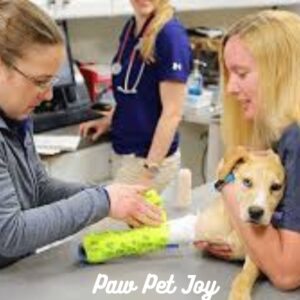
Choosing the Right Urgent Care Pet Clinic
Choosing the right urgent care pet clinic is crucial for ensuring that your furry friend receives the best possible care in times of need. Consider factors such as location, hours of operation, staff expertise, facilities, cost, and reviews when making your decision. By taking the time to research and choose a reputable clinic, you can have peace of mind knowing that your pet will be well taken care of in any emergency situation.
Selecting an appropriate urgent care pet clinic is essential for ensuring the best care for your pet. Here are some factors to consider:
Location and Accessibility: Choose a clinic that is easily accessible and within a reasonable distance from your home. One of the first things to consider when choosing an urgent care pet clinic is the location. You want to make sure that the clinic is easily accessible to you in case of an emergency. Whether you have a car or will need to rely on public transportation, it’s important to choose a clinic that you can get to quickly and easily.
Operating Hours: Check if the clinic’s hours align with your schedule, especially during evenings and weekends. Another important factor to consider is the clinic’s hours of operation. Emergencies can happen at any time, so you want to choose a clinic that is open 24/7 or at least has extended hours. This way, you can rest assured knowing that your pet will have access to care whenever they need it.
Reputation: Look for reviews and testimonials from other pet owners to gauge the clinic’s reputation.
When it comes to choosing a clinic, you also want to consider the experience and expertise of the staff. Look for a clinic that has a team of qualified veterinarians and technicians who have experience treating a wide range of pet health issues. It’s important to know that your pet will be in good hands when they are in need of urgent care.
Services Offered: Ensure the clinic provides the specific services your pet may need.
Cost is another important factor to consider when choosing an urgent care pet clinic. While you want to make sure that your pet receives the best possible care, you also want to be mindful of your budget. Look for a clinic that offers transparent pricing and payment options so that you know what to expect in terms of costs.
Qualified Staff: Verify that the clinic employs qualified and experienced veterinary professionals.
It’s a good idea to do some research and read reviews from other pet owners before choosing an urgent care pet clinic. Hearing about other people’s experiences can give you valuable insight into the quality of care that a clinic provides. Look for clinics with positive reviews and testimonials to ensure that your pet receives top-notch treatment.

FAQs
What types of conditions can an urgent care pet clinic treat?
Urgent care pet clinics can treat a variety of non-life-threatening conditions such as minor injuries, ear infections, skin rashes, and gastrointestinal issues. They can also provide preventive care like vaccinations and deworming.
How do urgent care pet clinics differ from emergency vet services?
Urgent care pet clinics handle medical issues that require prompt attention but are not severe enough to be considered emergencies. Emergency vet services, on the other hand, deal with critical and life-threatening conditions that require immediate, intensive care.
Are urgent care pet clinics more expensive than regular vet visits?
While urgent care pet clinics may be slightly more expensive than regular vet visits due to the immediate nature of their services, they are generally more cost-effective than emergency vet services.
Do I need an appointment for an urgent care pet clinic?
No, most urgent care pet clinics operate on a walk-in basis, allowing pet owners to bring in their pets without prior appointments.
Can urgent care pet clinics provide diagnostic services?
Yes, many urgent care pet clinics are equipped with diagnostic tools such as X-rays, blood work, and other tests to quickly diagnose and treat your pet’s condition.

The Future of Urgent Care Pet Clinics
The demand for urgent care pet clinics is expected to grow as pet ownership increases and more people seek convenient and accessible veterinary care options. Innovations in veterinary medicine, along with advancements in diagnostic technologies, will likely enhance the capabilities of urgent care pet clinics, making them an integral part of the veterinary care landscape.
As the demand for convenient and accessible healthcare services continues to rise, so does the need for urgent care pet clinics? These clinics, much like their human healthcare counterparts, provide veterinary care when you need it most, 24/7. But what does the future hold for these vital resources for pet owners and their pet companions?
One of the key trends for urgent care pet clinics going forward is the integration of technology. Advancements in telemedicine have already allowed pet owners to consult with veterinarians remotely, saving both time and money. In the future, we can expect to see even more sophisticated telemedicine platforms that allow for virtual exams, diagnoses, and treatment plans. This will not only make veterinary care more accessible, but also more efficient and cost-effective.
Key Takeaways
- Urgent care pet clinics offer immediate, non-emergency veterinary care.
- They provide a wide range of services, from minor injury treatment to diagnostics and preventive care.
- These clinics are cost-effective and convenient, often operating beyond standard hours.
- Choosing the right clinic involves considering factors like location, reputation, and services offered.
- The future of urgent care pet clinics looks promising, with growing demand and technological advancements enhancing their services.
Urgent care pet clinics represent a crucial development in veterinary care, offering a lifeline for pet owners needing swift and effective medical attention for their pets. As the landscape of pet healthcare continues to evolve, these clinics will play an increasingly vital role in ensuring the health and well-being of pets.

FAQs Summary
- Conditions Treated: Minor injuries, ear infections, skin rashes, gastrointestinal issues, preventive care.
- Difference from Emergency Services: Handles non-life-threatening conditions.
- Cost Comparison: Generally more affordable than emergency services.
- Appointment Requirement: Usually operates on a walk-in basis.
- Diagnostic Services: Equipped with diagnostic tools like X-rays and blood tests.
Key Points
- Immediate attention for non-life-threatening conditions.
- Extended operating hours, including weekends and evenings.
- Cost-effective alternative to emergency vet services.
- Comprehensive range of services, including diagnostics and preventive care.
- Peace of mind for pet owners with accessible urgent care options.
We offer medical advice in many urgent and emergency situations, including:
- Poison ingestion
- Vomiting/diarrhea
- Fever
- Dehydration
- Allergic reactions
- Bites/stings
- Bleeding
- Limping
- Fracture assessment
- Abscesses
- Shaking/tremors
- Difficulty breathing
- Rash
Conclusion:
Urgent care pet clinics are an invaluable resource for pet owners, offering timely and affordable care for various health issues. Their role in the broader spectrum of veterinary services is set to expand, providing a reliable option for pet owners in need of urgent, but not emergency, care.
